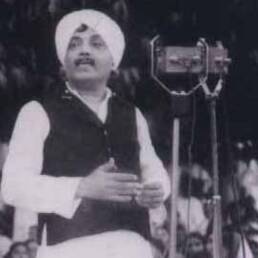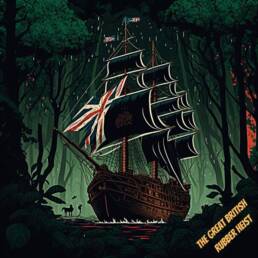About 70 years ago, the whims of India’s first Minister of Information & Broadcasting led to the birth of the most iconic radio programme for Indian listeners.
In 1952, in the first general elections, the Congress Party led by Pt. Nehru was elected to power with an overwhelming majority. Balakrishna Vishwanath Keskar was chosen by Nehru to take charge of the Ministry of Information and Broadcasting
Keskar was a man with strong opinions on certain subjects. His tenure is noted for several controversial decisions – including a short-lived ban on cricket commentary on radio, as well as a similar ban on the use of harmonium in All India Radio (AIR) programmes.
But the decision of Keskar that affected the future the most was his decision to ban film music from AIR. A classical music enthusiast, Keskar believed that film music was causing irreparable damage to Indian classical music.
After initially limiting film music to only 10% of airtime on AIR, he eventually took steps that made Hindi film songs persona non grata AIR. There was considerable public outrage as well as protests from the film industry. But Keskar didn’t relent.
Keskar’s ban soon became a boon for another party. Founded in 1925, Radio Colombo is the 2nd oldest radio station in the world. During WW2, it became Radio South East Asia Command (SEAC) – an effective means for the Allies to send messages to forces spread across SE Asia.
When Ceylon became independent in 1948, the former Radio SEAC became Radio Ceylon – which officially began its journey in Dec, 1949 with programmes in English, Tamil and Hindi and quickly gained popularity.
An enterprising American Daniel Molina, sensing a great business opportunity in India, founded a company called Radio Advertising Services in Bombay in 1951 to recruit sponsors for Radio Ceylon’s programmes.
Molina also established Radio Ceylon’s production arm, Radio Enterprises Pvt. Ltd. (REPL), and hired an AIR broadcaster named Hamid Sayani to head it. With Hindi film songs going off air, Radio Ceylon sensed a golden opportunity.
But Hamid Sayani could not find a producer/writer for a Hindi film song programme on the modest budget of Rs 25/week. Eventually, he settled on his younger brother Ameen. Around this time, the Swedish company Ciba launched their toothpaste brand “Binaca Top” in India.
To promote their brand, they decided to title sponsor a new Hindi film song based programme on Radio Ceylon. Thus the iconic “Binaca Geetmala” was born. Ameen Sayani hosted the Geetmala which aired on every Wednesday evening.
During 1952-53, the programme did not have a countdown format. That changed in 1954. The ranking was decided based on record sales as well as fan postcards. The latter was scrapped after it was discovered that many listeners were sending multiple entries.
Such was the popularity of Binaca Geetmala that Keskar and AIR had to take a step back and launch Vividh Bharati in 1957 to broadcast film songs. But it could not derail the rise of Binaca Geetmala.
Every Wednesday evening, the entire subcontinent eagerly waited to hear the iconic lines: “Jee haan bhaiyoo aur behnoo, main hoon apka dost Ameen Sayani aur aap sunn rahein hain Binaca Geetmala!”
Geetmala and Sayani’s brilliant partnership continued on Radio Ceylon until 1989, when it moved to Vividh Bharati. The title changed from Binaca to Cibaca Geetmala along the way. The show retained its loyal audience.
The launch of satellite TV marked the end of the road for Geetmala. Song countdown shows on TV like Superhit Muqabla quickly became a big hit as radio made way for TV. Finally Geetmala’s 42 year journey ended in 1994.
But for several generations of Indians, Geetmala will always remain close to their hearts. On that note, bhaiyoo aur behnoo, do share any unique memory that you may have associated with this remarkable show.
Sources:
- https://www.cinemaazi.com/feature/play-filmy-for-me
- https://navbharattimes.indiatimes.com/india/story-of-binaca-geetmala-redio-show-ameen-sayani-ki-kahani/articleshow/95976867.cms
- https://web.archive.org/web/20060822190557/http://www.exchange4media.com/e4m/Radio/radiospeak.asp?rsid=25
- https://web.archive.org/web/20060303194321/http://www.hindu.com/mag/2006/01/01/stories/2006010100150400.htm




